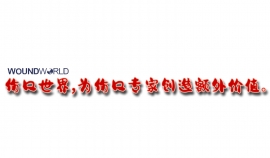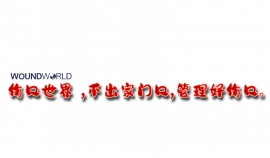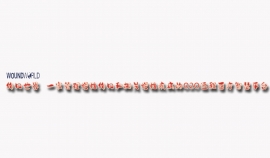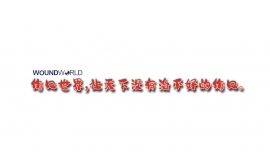文献精选
王勤周1 王 辉1 综述,陈红艳2 审校
(1.陕西省医疗器械质量监督检验院 陕西 西安 712046;2.空军军医大学唐都医院惠宾科 陕西 西安 710038)
[摘要]随着人们生活质量的不断提高,抗衰老的要求日益增强。干细胞具有自我更新、多向分化和旁分泌因子分泌能力,在创伤修复、组织再生和抗衰老等临床医学领域显现出良好的应用前景。本文就干细胞在抗衰老、促进皮肤再生领域的研究进展进行综述,从自体干细胞的移植、内源性干细胞的刺激和外源性成体干细胞移植的作用及其机制等角度探讨了干细胞抗衰老的可行性。以期为未来相关医疗保健及美容产品的开发提供借鉴。
[关键词]衰老;抗衰老技术;干细胞;细胞移植;医学美容
[中图分类号]R622 [文献标志码]A [文章编号]1008-6455(2018)11-0170-04
通信作者:陈红艳,空军军医大学唐都医院惠宾科护士长,主管护师,高级美容技师;在文绣美容,问题性皮肤护理,痣、疣、斑的超高频治疗方面有丰富的临床工作及教学经验
第一作者:王勤周,陕西省医疗器械质量监督检验院,硕士研究生,副主任技师;研究方向:生物医学组织工程技术的应用;E-mail: 该Email地址已收到反垃圾邮件插件保护。要显示它您需要在浏览器中启用JavaScript。
The Application of Stem Cell Technology in the Field of Anti-aging
WANG Qin-zhou1 ,WANG Hui1 ,CHEN Hong-yan2
(1.Shaanxi Institute of Medical Device Quality Supervision and Inspection,Xi’an 712046,Shaanxi,China;2.Huibinke,Tangdu Hospital,Air Force Military Medical University,Xi’an 710038,Shaanxi,China)
Abstract: With the continuous improvement of people's life quality, the demand of anti-aging is increasing. Stem cells are non-specialized cells which have the ability of self-renewal, multiple differentiation and paracrine secretion. It has been shown that stem cells have good application prospects in the field of trauma repair, tissue regeneration and anti-aging. This paper reviewed the progress of stem cell research in the field of anti-aging and promoting skin regeneration. The feasibility of rejuvenation technologies by stem cells was discussed from the point of view of autologous stem cell transplantation, activation of endogenous stem cells, and the effect and its mechanism of exogenous stem cell transplantation. It will provide reference for future development of related medical care and beauty products.
Key words: senility; rejuvenation technologies; stem cells; cell transplantation; medical cosmetology
赵学凯,梁自乾,张宪发,宗守凯
Mature epidermal cells dedifferentiate towards epidermal stem cells
Zhao Xue-kai, Liang Zi-qian, Zhang Xian-fa, Zong Shou-kai
Department of Burn and Plastic Surgery, the First Affiliated Hospital of Guangxi Medical University, Nanning 530021, Guangxi Zhuang Autonomous Region, China
Zhao Xue-kai★,Studying for master’s degree, Department of Burn and Plastic Surgery, the First Affiliated Hospital of Guangxi Medical University, Nanning 530021, Guangxi Zhuang Autonomous Region, China zhaoxuekai3581@ 163.com
Correspondence to: Liang Zi-qian, Professor, Master’s supervisor, Department of Burn and Plastic Surgery, the First Affiliated Hospital of Guangxi Medical University, Nanning 530021, Guangxi Zhuang Autonomous Region,China Liangzqian@ yahoo.com.cn
Received: 2011-06-16 Accepted: 2011-10-10
广西医科大学第一附属医院烧伤整形外科,广西壮族自治区南宁市530021
赵学凯★,男,1985 年生,山东省滨州市人,汉族,广西医科大学在读硕士,主要从事创面愈合、表皮干细胞的研究。该Email地址已收到反垃圾邮件插件保护。要显示它您需要在浏览器中启用JavaScript。
通讯作者:梁自乾,教授,硕士生导师,广西医科大学第一附属医院烧伤整形外科,广西壮族自治区南宁市 该Email地址已收到反垃圾邮件插件保护。要显示它您需要在浏览器中启用JavaScript。
中图分类号:R318
文献标识码:B
文章编号: 1673-8225 (2011)49-09295-04
收稿日期:2011-06-16
修回日期:2011-10-10 (20110516001/WL·W)
Abstract
BACKGROUND: Epidermal stem cells as seed cells have been paid great attention on the research of wound repair and regeneration with its specific biological advantages with the development of molecular biology and bioengineering.
OBJECTIVE: To review the recent advances in the mature epidermal cells dedifferentiating towards epidermal stem cells.
METHODS: The first author retrieved PubMed database, Highwire database (Highwire.standford.edu) and CNKI for articles published from January 1998 to January 2011. The key words were “dedifferentiation, epidermal stem cell, epidermal cell, induction” in English and Chinese. A total of 2 754 literatures were collected, and finally 46 papers were included in result analysis.
RESULTS AND CONCLUSION: The dedifferentiated epidermal stem cells have some characteristics of native epidermal stem cells and perhaps they may act as a new vehicle for wound repair and regeneration. Both of the native epithelial stem cells and the dedifferentiated epithelial stem cells can promote the wound repair and their effects were on the same level. Because differentiation from epidermal cells into epidermal stem cells has many questions, so far, there are many animal researches, but its extensive clinical application deserves further development.
Zhao XK, Liang ZQ, Zhang XF, Zong SK. Mature epidermal cells dedifferentiate towards epidermal stem cells.Zhongguo Zuzhi Gongcheng Yanjiu yu Linchuang Kangfu. 2011;15(49):9295-9298. [http://www.crter.cn http://en.zglckf.com]
摘要
背景:表皮干细胞以显著的自我更新和多向分化潜能及皮肤组织工程学中诱人的应用前景,作为“种子细胞”成为皮肤创伤研究领域的热点之一。
目的:综述表皮细胞去分化逆转为表皮干细胞的研究近况。
方法:应用计算机检索 1998-01/2011-01 PubMed、Highwire 和中国期刊全文数据库相关文章,检索词“dedifferentiation,epidermal cells,epidermal stem cells,induction,去分化,表皮细胞,表皮干细胞,诱导”。共检索到文献 2 754 篇,最终纳入符合标准的文献 46 篇。
结果与结论:去分化来源的表皮干细胞与机体自身来源的表皮干细胞之间在形态学和功能有许多相似点,并可表达表皮干细胞的特异性标记物。表皮细胞去分化途径制造表皮干细胞,可以作为机体自身来源表皮干细胞的替代细胞应用于皮肤损伤重建和再生的相关研究,为实现皮肤创伤由解剖修复到功能修复的“完美修复”提供新思路。
关键词:表皮细胞;去分化;表皮干细胞;诱导;皮肤组织工程;创面愈合;综述文献
doi:10.3969/j.issn.1673-8225.2011.49.041
赵学凯,梁自乾,张宪发,宗守凯.表皮细胞去分化的表皮干细胞[J].中国组织工程研究与临床康复,2011,15(49):9295-9298.
[http://www.crter.org http://cn.zglckf.com]
徐垄,柴琛,滕永军
兰州大学第一医院普外科,甘肃兰州730000
摘要:对表皮干细胞的特征、亚群、调控通路、微环境、与皮肤肿瘤的关系及临床应用作一综述,总结近年来表皮干细胞的最新研究进展,为进一步研究提供思路和研究方向。
关键词:表皮干细胞;增殖;分化;信号通路;皮肤肿瘤,临床应用
中图分类号:R6
文献标识码:A
doi:10.13885/j.issn.1000—2812.2017.01.013
收稿日期:2016—12-03
基金项目:甘肃省卫生行业科研计划项目(GSWST2011-05)
作者简介:柴琛,博士,主任医师,研究方向为创伤愈合,e-mail:chasechai@126.com,通信联系人
滕永军,博士,主任医师,研究方向为创伤愈合,e—mail:Tengyj@lan.edu.cn,共同通信联系人
Epidernal stem cell:a new hope for cell therapy
Xu Kun,Chai Chen,Teng Yong-jun
Department ofGeneral Surgery,First Hospital ofLanzhou University,Lanzhou 730000,China
Abstract:In this paper,we reviewed the characteristics,microenvironment,subpopulation,regulatory path—ways,clinical applications of epidermal stem cells(ESCs)and the relationship between skin cancer and ESCs,and summarized recent advances in ESCs to provide some ideas andresearch directions for relevant researchers.
Keywords:epidermal stem cells;proliferation;differentiation;signaling pathway;skin cancer;clinical application
蓝蔚,刘德伍,毛远桂
南昌大学第一附属医院烧伤中心,江西省南昌市330006
蓝蔚★,男,1979年生,江西省大余县人,畲族,南昌大擘在读硕士,主要从事烧伤创面修复与皮肤组织工程方面的研究。lan_wei@163.Com
通讯作者:刘德伍,博士,主任医师,博士生导师,南昌大学第一附属医院烧伤中心,江西省南昌市330006dewuliu@126.com
国家自然科学基金(30560058)*:江西省科技厅重大科技招标项目(200604)*:江西省教育厅科研项目(赣教技字『2005】187)+;江西省卫生厅科研项目(20041038)*
中图分类号:R394.2文献标识码:A 文章编号:1673.8225 (2008)25.049364)5
收稿日期:20cr7.10.19 修回日期:2008-02.28 (07-50-10-5643/ZS●Y)
Centre of Bums,the First Affiliated Hospital of Nanchang University,Nanchang 330006. Jiangxi Province,China
Lan Wei★.Smdyiag for ma.qter’s degree, Centre of Burns,the First Amhated Hospital of Nanchang University,Nanchang 330006, Jiangxi Province。China Lan wei@163.Com
Correspondelice to: Liu De-wu,Doctor, Chief physician, Tutor of doctor, Centre of Burns,the First Affiliated Hospital of Nanchang University,Nanehang 330006,liangxi Province.Cbina dewuliu@126.tom
Supported by:the National Natural Science Foundation of China.No.30560058+:the Great Invited Tenders Foundation of Jiangxi Provincial Science and Technology Bureau. No.200604*:the Science Research Foundation of Jiangxi Provincial Education Bureau, No 2005一187+:the Science Research Foundation of Jiangxi Provincial Health Bureau,No, 20041038*
Received:2007..10..19 Accepted:2008-02-28
Abstract:Epidermal stem cell is a specific stem cell.which locates in epidermal basaI layer and the eminence of hair follicle.Epidermal stem cells have the characteristic of the undifferentiated cells in the morphology.and are tile biological source of the skin and its subsidiary in the development.repair and reconstruction.At present.the identification markers of epidermal stem cell include integrin,keratin.proliferating cell nuclear antigen,genic material and connectin.The proliferation and differentiation of epidermal stem cell arc influenced by many factors.such as integrin.signal transduction pathway and cytokines.Current researches of epidermal stem cell in skin wound healing,building of tissue.engineered skin,gene therapy and other areas have made great progress,but there are still many problems to wait for solving,such as establishing an absolutely recognized specific marker,the directed differentiation from embryonic stem cells to epidermal stem cells.how to mainrain its stem cell characteristics and induce large amplification.whether it will have a malignant transformation in clinical application.
Lan,W. Lu DW,Mao YG.Biological characteristics of epidermal stem cells nerves.Zhongguo Zuzhi Gongcheng Yanjiu yu Linchuang Kaugfu 2008;12(25):4936-4940(China) [wWW.zglckf.com/zglckf/ejoumal/upfiles/08—25/25k一4936(ps).pdf]
摘要:表皮干细胞是来源于胚胎外胚层皮肤组织的专能干细胞,丰要分布于表皮基底层和毛囊隆突部,形态学上具有未分化细胞的特征,在生物学方面是皮肤及其附属器发牛、修复、改建的源泉。现阶段对表皮T细胞的鉴定需采用整合素、角蛋白、增殖细胞核抗原、基因物质及连接蛋白等多个标记物,其增殖分化受整合素、信弓转导通路及细胞冈子等冈素影响。
目前表皮干细胞研究在皮肤创面修复、组织工程皮肤的构建、基因治疗等方面均L二取得显著进展,但仍存在如何确立一种绝对公认的特异标记物、从胚胎T-细胞向表皮干细胞分化培养过程中怎样维持其干细胞特性以及快速大量扩增、应用于临床是否会恶性变而产生医疗安全等急需解决的问题。
关键词:表皮干细胞;定位:标记物;增殖分化;综述文献
蓝蔚,刘德伍,毛远桂.表皮干细胞生物学特性研究现状.[J】中国组织工程研究与临床康复,2008,12(25):4936—4940
【www.zglckf.conffzglckf/ejournal/upfiles/08—25/25k一4936(ps).pdf]




